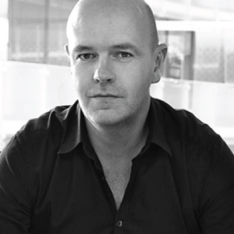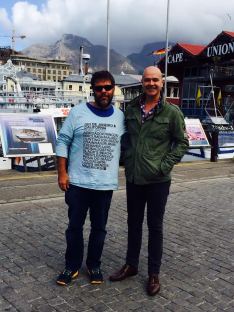What Australia’s fake, formulaic and contrived work could learn from the humanity of Africa
 Australia’s “fake, formulaic and contrived” creative work could learn a few things from the insight-driven cream of African advertising, argues Pat Baron.
Australia’s “fake, formulaic and contrived” creative work could learn a few things from the insight-driven cream of African advertising, argues Pat Baron.
I’ve just had the privilege and pleasure of spending a week of 14-hour working days poring over the most creative and effective work created in Africa and the Middle East, as Jury Chairman at The Loeries, Africa’s largest brand communication awards. The contrasts with our work here in Australia – and the lessons for marketers and agencies alike – are profound.
One of the great advantages of being invited to judge advertising awards shows is the inspiration overload you walk away with.
And the Loeries, which are part of Leories Creative Week held in Cape Town, are a great barometer for world-class work. From what I’ve seen over my week of judging, agencies from Africa and the Middle East are creating envy-inducing work that is delivering phenomenal results for their clients. Interestingly, in the past six years three Cannes Grand Prix radio winners were from Africa and the Middle East.
Advertising in Africa is incredibly diverse because campaigns here can range from selling luxury cars to helping save women from being raped, or finding ways to help children learn to read.
Amid the stark social, economic and political contrasts evident in African countries, advertising here must be – and is – clever, brave, funny, strategic and innovative. It uses all forms of media and the quality of integrated thinking is, dare I say, higher than in most established markets.
Some of the best campaigns we judged included “Radio Rescue, The Rescue Continues” from Geometry Global Dubai, offering help to foreign female labour being sexually abused. Another was an initiative for Nedbank, by Native VML, which took a group of young men from South Africa’s slums and trained them for one year to take on the Kaizer Chiefs Football Club in a soccer match.
Radio Rescue:
Nebank Ke Yona team search:
https://www.youtube.com/watch?v=ZHELEOsBTdE
The newcomers held their own against the professionals, and drew nil all, but the beauty of this campaign is that it demonstrated what big corporations can achieve when they work with the community. Some of those boys from the slums are now playing professional soccer. Tell me that wouldn’t make you view that bank in a different light.
Another inspiring piece of work was a clever campaign from FCB South Africa for Coca-Cola in which water was sprayed from the top of a building at a time of day and a particular angle that it formed a rainbow. The campaign was commemorating 20 years since the end of apartheid in South Africa, with the term “A Rainbow For The Rainbow Nation” coined in 1984 by Archbishop Desmond Tutu to describe the cultural diversity of South Africa.
Coca-Cola Rainbow Nation:
Meeting like-minded individuals passionate about advertising is another benefit of attending global awards shows. In Cape Town, I was lucky enough to spend time with PJ Pereira, founder & chief creative officer of hotshop Pereira & O’Dell, and one of the global ad industry’s most sophisticated storytellers.
We agreed there is no formula to doing great work. You have to tackle each business problem individually on its own merit and find a beautiful idea for each client challenge. As PJ says, anyone looking for a formula in advertising is looking in the wrong place.
On my part, for my Chairman’s speech, I spoke to the audience about not sticking to formulas and building trust between client and agency. I truly believe when mutual trust exists, the work benefits more than either agency or client anticipate.
The key, of course, is that the trust must be mutual. So not just the client trusting the agency, but the agency trusting its clients to make the work better. You are more likely to have honest conversations with your clients when your relationship is anchored in mutual trust – or put another way, your clients are more likely to discuss with you their real problems and challenges. And when you are both in that space, you are more likely to come up with an idea that hits the mark.
The theme of the week has been diversity. And it’s our diversity and differences that make us who we are. The diversity and humanity in the work I’ve had the pleasure to judge here is what makes it so compelling. And this is both the lesson and the opportunity for Australian marketers and agencies.
So much work in our own market here is fake, formulaic and contrived, for brands that frankly should know and could do much better. Where is the diversity and humanity that could make it so much more compelling? Where are the human truths driving it, or the business insights or problems the work is trying to address? Where is the mutual trust and collaboration between agency and client to create truly great work that works?
Too many Australian campaigns are just advertising for advertising’s sake. Work created by agencies that don’t try, for clients and consumers who don’t care.
If the kind of care and attention I saw at the Loeries was paid here to being more genuine and authentic in how we communicate our brand proposition and purpose, the rewards and return on creative investment for Australian clients would be immense.
Pat Baron is ECD at McCann Melbourne





I have to say, this is very refreshing to hear from a creative director. I work with a panel of agencies and often have to wonder what the creatives are thinking with some of the work they bring in. Not only is it not even ‘on brand’ and lacking in any commercial or real world insight, it has little chance of ever motivating our customers or key-stakeholders. Is this an ‘Australian’ thing or just an ‘agency’ thing though. Pat based on your comments about this international work, it does sound like the former. I’d be intrigued to know how many other marketers agree though. It’s an issue I agonise about often as it seems to me too many agency creatives just ‘don’t get it’. Or is it just me?
User ID not verified.
Good point made well.
User ID not verified.
Well said Pat.
Though I think the answer is possibly simpler than you think.
There are two key words in you’re piece that should stick front of mind, “diversity and humanity”.
Quite simply, it can’t be in the work if it isn’t in the industry.
I don’t intend to be critical, or cynical.
Perhaps there just isn’t room for people for a more diverse workforce in the industry (I definitely don’t believe that to be true).
User ID not verified.
Great article. Always interested about hearing what’s happening in other markets outside of NY / London. Australia does feel very safe compared to what you see from emerging markets.
User ID not verified.
I agree Pat.
However, you are in a position to try to change this within the Australian market.
So instead of writing a nice little pep talk, how about you enact these changes you advocate, starting with your own team at McCann.
Until creative leaders (and clients) stand up and enforce change, the Aus ad industry will remain the same.
User ID not verified.
It doesn’t have to be Africa, or some transformative re-emergence into being, it’s just about waking up to what’s around you and understanding the different elements that constitute the human experience more deeply, I reckon.
That’s what the people of Africa have – a more intimate proximity to their own humility.
Like this… http://splashurl.com/kgcvh8z
User ID not verified.